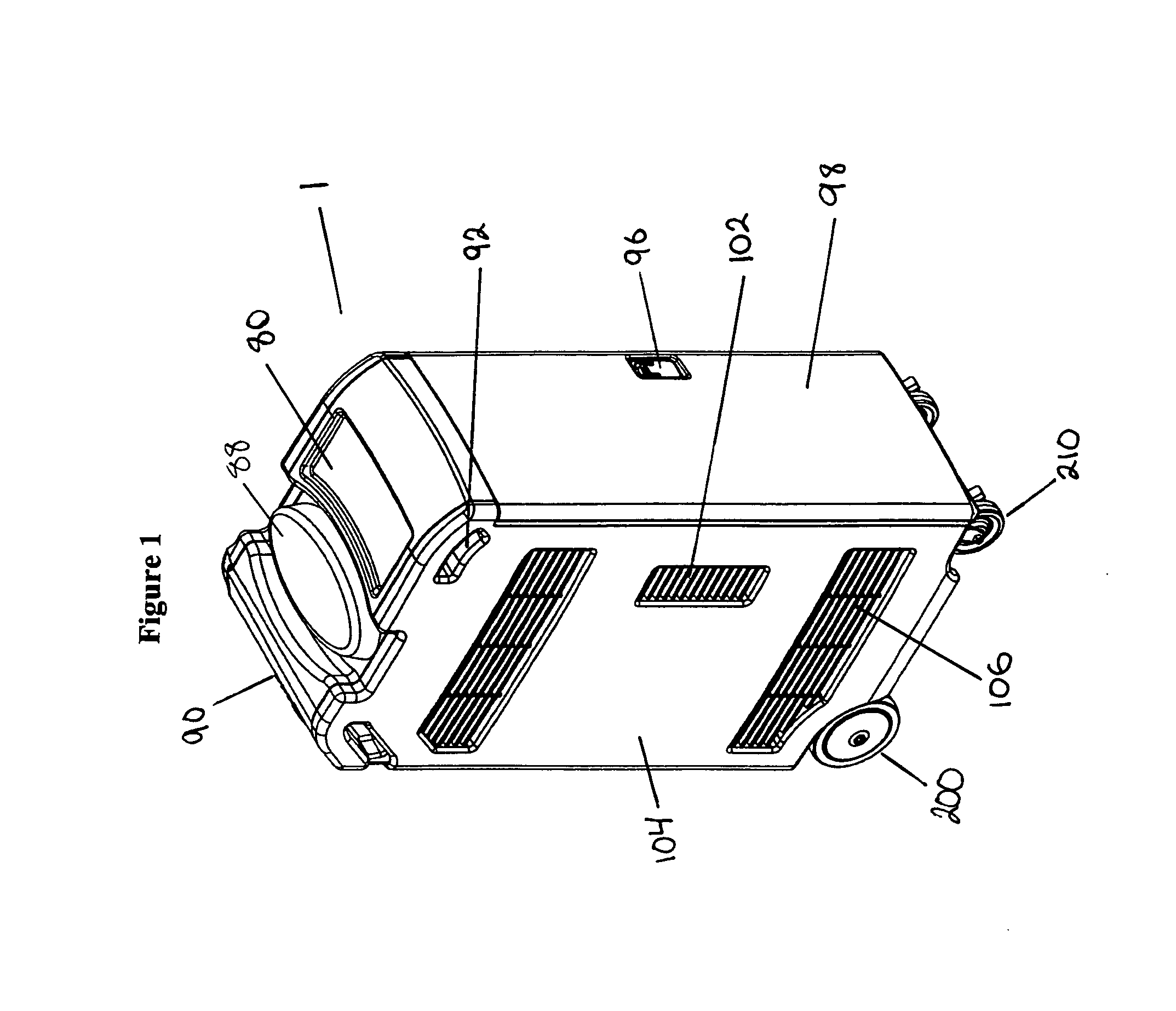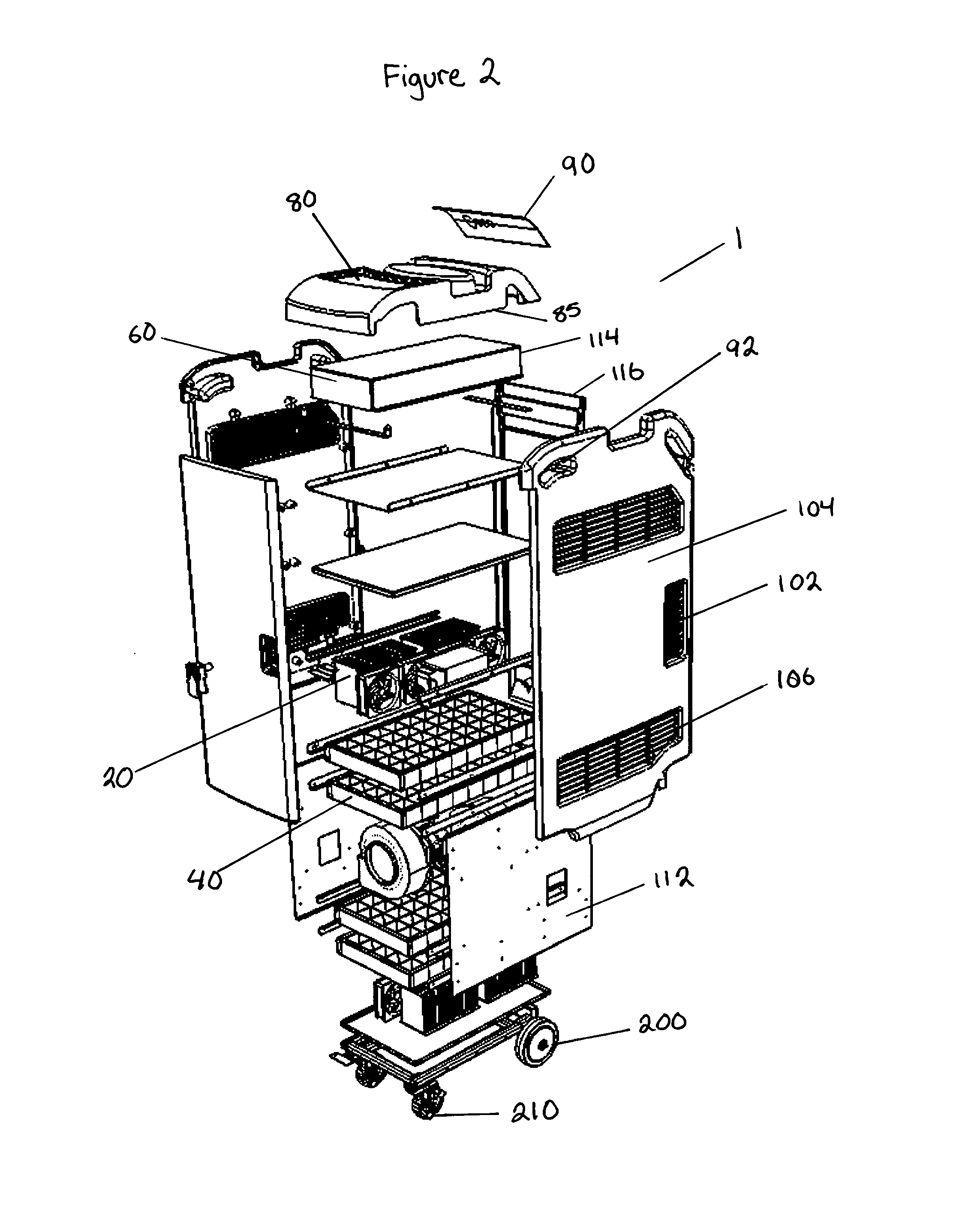Apparatus and method for using ozone as a disinfectant
a technology of ozone and disinfectant, which is applied in the direction of oxygen/ozone/oxide/hydroxide, chemical/physical/physico-chemical processes, inorganic chemistry, etc., can solve the problem of unpleasant sound generated by the sound generator, and achieve the effect of increasing the humidity of the closed environmen
- Summary
- Abstract
- Description
- Claims
- Application Information
AI Technical Summary
Benefits of technology
Problems solved by technology
Method used
Image
Examples
use example 1
Hotels
[0074] The hotel industry is based on frequent visitors to particular rooms, and such visitors often only stay a single night. Hotels are also one of the worst effected by disease scares such as SARS, as tourism is one the industries most keenly effected. Hotels have also been using ozone at low concentrations to reduce odours in rooms.
[0075] As used in hotels according to the method, a maid after initially cleaning a vacated room (preferably after the guest had checked out) would place the disinfection apparatus in the room, set it for the specified ozone concentration, and leave the room (including locking the door), returning when the time had passed and the ozone concentration was reduced to safe levels. The disinfection apparatus can then be taken to the next appropriate room.
[0076] At the end of the process, the ozone would kill the viruses, bacteria and fungi left by the departing person(s). A dormitory could go through a similar disinfection process.
use example 2
Airplanes
[0077] The airline industry is another industry prone to financial losses when fear of a disease outbreak strikes. To use the method according to the invention on an airliner, after the airliner is initially cleaned, one or more disinfection apparatuses are used within the airliner. During the period of high ozone levels, access to the interior of the airplane should be prevented.
[0078] Once the necessary time has passed, and the ozone concentrations are safe, the interior of the airplane is accessed and the disinfection apparatuses can be removed.
use example 3
Cruise Ships
[0079] Cruise ships present an environment where a disease can spread rapidly due to the confinement of a large number of people in a relatively small environment. The method according to the invention is useful when the ship is docked and few people are about, in which case the method is used in a manner very similar to that of the hotel example described previously. Alternatively, the disinfection apparatus could be used within a cabin when the inhabitants report certain symptoms. The disinfection apparatus could also be used in both public areas (which may require more than one disinfection apparatus), and smaller high traffic areas (such as gift shops).
PUM
 Login to View More
Login to View More Abstract
Description
Claims
Application Information
 Login to View More
Login to View More - R&D
- Intellectual Property
- Life Sciences
- Materials
- Tech Scout
- Unparalleled Data Quality
- Higher Quality Content
- 60% Fewer Hallucinations
Browse by: Latest US Patents, China's latest patents, Technical Efficacy Thesaurus, Application Domain, Technology Topic, Popular Technical Reports.
© 2025 PatSnap. All rights reserved.Legal|Privacy policy|Modern Slavery Act Transparency Statement|Sitemap|About US| Contact US: help@patsnap.com



